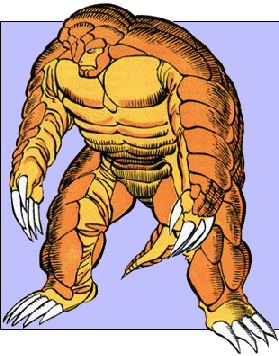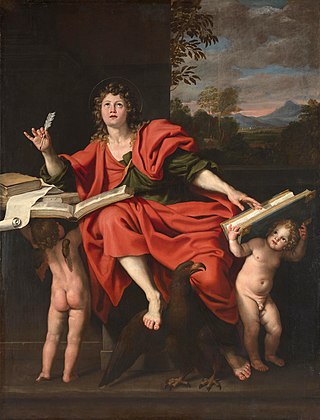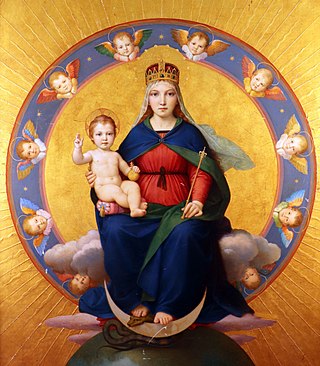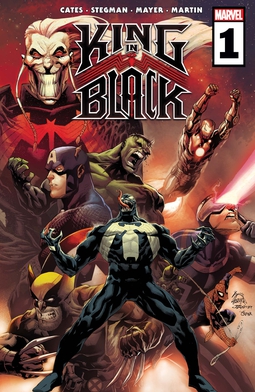
Edward James Hughes was an English poet, translator, and children's writer. Critics frequently rank him as one of the best poets of his generation and one of the twentieth century's greatest writers. He was appointed Poet Laureate in 1984 and held the office until his death. In 2008, The Times ranked Hughes fourth on its list of "The 50 greatest British writers since 1945".

In mythology, folklore and speculative fiction, shapeshifting is the ability to physically transform oneself through unnatural means. The idea of shapeshifting is in the oldest forms of totemism and shamanism, as well as the oldest existent literature and epic poems such as the Epic of Gilgamesh and the Iliad. The concept remains a common literary device in modern fantasy, children's literature and popular culture.

Armadillo is a supervillain appearing in American comic books published by Marvel Comics.

The Iron Man: A Children's Story in Five Nights is a 1968 science fiction novel by British Poet Laureate Ted Hughes, first published by Faber and Faber in the UK with illustrations by George Adamson. Described by some as a modern fairy tale, it narrates the unexpected arrival in England of a giant "metal man" of unknown origin who rains destruction on the countryside by eating industrial farm equipment, before befriending a small boy and defending the world from a dragon from outer space. Expanding the narrative beyond a criticism of warfare and inter-human conflict, Hughes later wrote a sequel, The Iron Woman (1993), describing retribution based on environmental themes related to pollution.

The Surprising Adventures of the Magical Monarch of Mo and His People is the first full-length children's fantasy novel by L. Frank Baum. Originally published in 1899 as A New Wonderland, Being the First Account Ever Printed of the Beautiful Valley, and the Wonderful Adventures of Its Inhabitants, the book was reissued in 1903 with a new title in order to capitalize upon the alliterative title of Baum's successful The Wonderful Wizard of Oz. The book is only slightly altered—Mo is called Phunniland or Phunnyland, but aside from the last paragraph of the first chapter, they are essentially the same book. It is illustrated by Frank Ver Beck.

Not Wanted on the Voyage is a novel by Canadian author Timothy Findley, which presents a magic realist post-modern re-telling of the Great Flood in the biblical Book of Genesis. It was first published by Viking Canada in the autumn of 1984, and was a shortlisted finalist for the Governor General's Award for English-language fiction at the 1984 Governor General's Awards.

The events of Revelation are the events that occur in the Book of Revelation of the New Testament. An outline follows below, chapter by chapter.

Wild Magic is a fantasy novel by Tamora Pierce, the first in a series of four books, The Immortals. It details the emergence of the powers of Veralidaine Sarrasri as a wild mage and her coming to Tortall.

Morgan le Fay is a supervillain appearing in American comic books published by Marvel Comics. The character, created by Stan Lee and Joe Maneely, is based on the Morgan le Fay of Arthurian legend. In this version of the character, Morgan le Fay belongs to the species of humanoid magical beings called fairies, who are born with supernatural powers, and is the half-faerie half-sister of the mythic King Arthur. Her elven heritage granted her immortality, and she used this time to master the mystic arts. She occasionally tries to take over the world. She has been an opponent of The Avengers, and in the 1970s, she appeared in the original Spider-Woman comic acting as a foe of Jessica Drew, while opposed by a reincarnation of her "ancient foe" Magnus. She is a former lover of Doctor Doom, and was a member of the Darkholders for a time.

The Woman of the Apocalypse is a figure–often considered to be a reference to the Virgin Mary in Catholic theology–described in Chapter 12 of the Book of Revelation.

Veranke is a character appearing in American comic books published by Marvel Comics. The queen of the Skrull Empire, she is the main antagonist of Secret Invasion in which she leads her empire to invade and conquer Earth.

The Gentleman is a fictional supervillain and an enemy of the Marvel Comics superhero Spider-Man. The character first appeared in a trilogy of Spider-Man novels written by Adam-Troy Castro before appearing within the comic books themselves. The Gentleman made his film debut in 2012 in The Amazing Spider-Man, portrayed by actor Michael Massee, who reprised the role in the film's 2014 sequel The Amazing Spider-Man 2.

"King in Black" is a comic book event written by Donny Cates with art by Ryan Stegman, and was published from 2020 to 2021 by Marvel Comics. It is a continuation to 2019's "Absolute Carnage", also containing fallout from 2020's "Empyre". In the story, Knull and his symbiotes invade Earth, leaving Eddie Brock / Venom, the Avengers, the X-Men, and numerous other superheroes to protect it.













